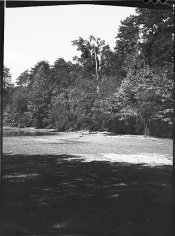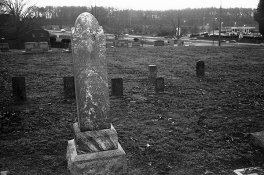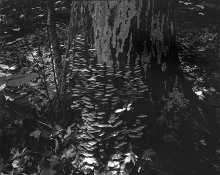So, @MattKing you're one of those guys who believes "pushing" is nothing more than film abuse. Mind you, I believe most of what you wrote (though a Push +2 development will improve shadow speed slightly -- perhaps a half stop, in most developers, relative to Normal). That said, I've (accidentally) shot film through the base side (loaded the film backward in large format) and got images with usable shadow detail by using a special developer.

Super Soup
This developer was created in an attempt to salvage some Tri-X sheet film negatives that were loaded backward and exposed through the base, approximately five stops of antihalation between the lens and the emulsion. It works very well, and with the recommended process prints at near-normal contrast rather than showing the extreme contrast you'd get with a conventional push (which, in any case, can't come anywhere near this level). It seems to get literally everything possible out of any film on which I've treid it -- and given what's in it, is most likely developing to completion, which is what controls the contrast.
6 ounces water
24 ml Dektol stock solution
8 ml HC-110 syrup (or 32 ml stock solution)
1 g ascorbic acid
1/2 tsp washing soda (sodium carbonate monohydrate)
2 g potassium bromide (optional)
Water to make eight ounces
Develop for fifteen minutes, agitating very vigorously every thirty seconds. Stop and fix normally. Some fog is normal, and can be printed through. You will (of course) see an increase in grain, but it's not as much as you might expect; with large format and even the larger medium format negatives the grain increase may be barely noticeable (and isn't objectionable in comparison to super-fast films in 35 mm).
Film Effective EI
Tri-X (ISO 400), 400TX 6400
Tri-X (ISO 320), 320TXP, TXT 5000
Forte 200/Classic 200 1000
This developer was created in an attempt to salvage some Tri-X sheet film negatives that were loaded backward and exposed through the base, approximately five stops of antihalation between the lens and the emulsion. It works very well, and with the recommended process prints at near-normal contrast rather than showing the extreme contrast you'd get with a conventional push (which, in any case, can't come anywhere near this level). It seems to get literally everything possible out of any film on which I've treid it -- and given what's in it, is most likely developing to completion, which is what controls the contrast.
6 ounces water
24 ml Dektol stock solution
8 ml HC-110 syrup (or 32 ml stock solution)
1 g ascorbic acid
1/2 tsp washing soda (sodium carbonate monohydrate)
2 g potassium bromide (optional)
Water to make eight ounces
Develop for fifteen minutes, agitating very vigorously every thirty seconds. Stop and fix normally. Some fog is normal, and can be printed through. You will (of course) see an increase in grain, but it's not as much as you might expect; with large format and even the larger medium format negatives the grain increase may be barely noticeable (and isn't objectionable in comparison to super-fast films in 35 mm).
Film Effective EI
Tri-X (ISO 400), 400TX 6400
Tri-X (ISO 320), 320TXP, TXT 5000
Forte 200/Classic 200 1000






 .
.